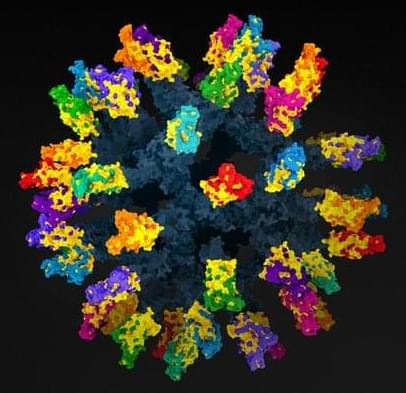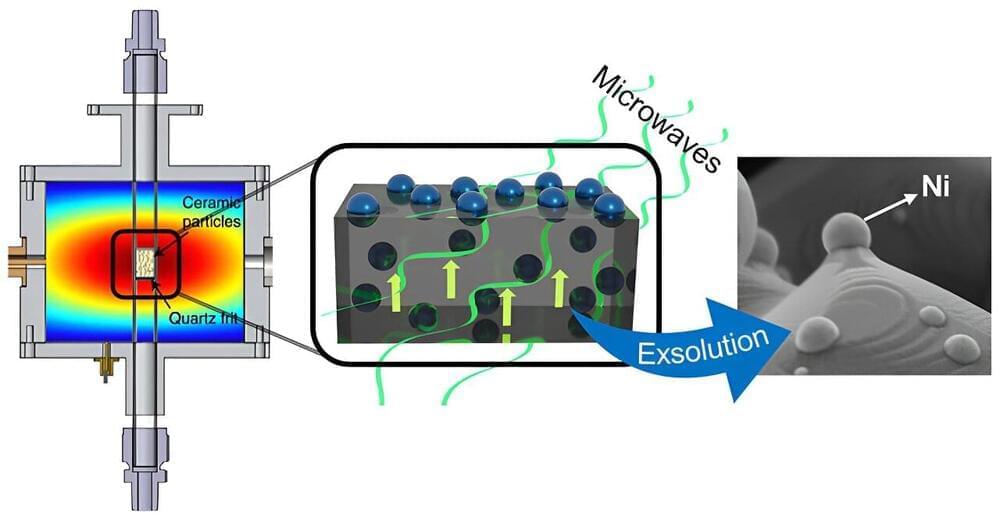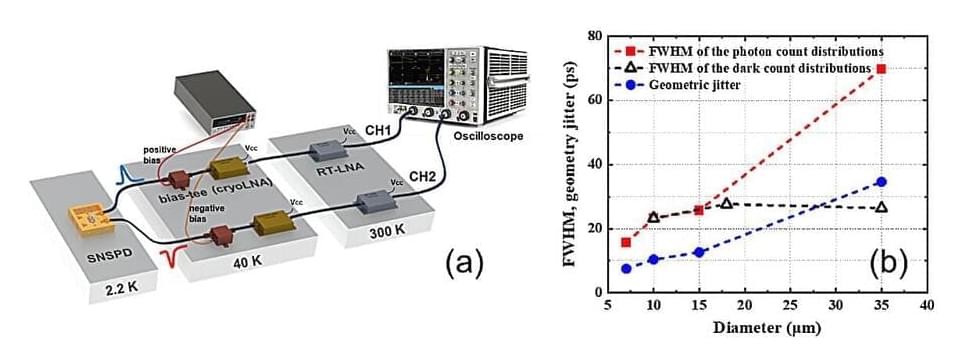A combination of electrical stimulation and a gold nanoparticle-laced hydrogel could one day help people recover from major muscle injuries.
Category: nanotechnology – Page 126

A global dataset of pandemic- and epidemic-prone disease outbreaks
I believe nanomachines or new advanced rna antivirals that can target one’s own variants of viruses will be game changers to prevent future global pandemics. Also eventually new genetic engineering could allow for the end to all viruses with some sorta Omni vaccine.
Measurement(s) Pandemic-and epidemic-prone disease outbreaks Technology Type(s) Text mining using R Sample Characteristic — Organism Disease outbreaks Sample Characteristic — Environment spatiotemporal region Sample Characteristic — Location Global.


Scientists discover new method for generating metal nanoparticles to use as catalysts
A team of researchers from the ITACA Institute of the Universitat Politècnica de València (UPV) and the Research Institute of Chemical Technology, a joint center of the Spanish National Research Council (CSIC) and the UPV, has discovered a new method for the manufacture of metal nanocatalysts that is more sustainable and economical.
With great potential in the industrial sector, the method would contribute to the decarbonization of industry. The work has been published in the journal ACS Nano.
This new method is based on the exsolution process activated by microwave radiation. Exsolution is a method of generating metallic nanoparticles on the surface of ceramic materials. “At elevated temperatures and in a reducing atmosphere (usually hydrogen), metal atoms migrate from the structure of the material to its surface, forming metal nanoparticles anchored to the surface. This anchoring significantly increases the strength and stability of these nanoparticles, which positively impacts the efficiency of these catalysts,” explains Beatriz García Baños, a researcher in the Microwave Area of the ITACA Institute at the UPV.
Anne M. Andrews and Paul S. Weiss Public Lecture: Nanotechnology Meets Neuroscience and Medicine
In their public lecture at Perimeter on May 1, 2019, neuroscientist Anne M. Andrews and nanoscientist Paul S. Weiss outlined their scientific collaboration and explained the importance of communicating across disciplines to target significant problems. \
\
Perimeter Institute (charitable registration number 88,981 4323 RR0001) is the world’s largest independent research hub devoted to theoretical physics, created to foster breakthroughs in the fundamental understanding of our universe, from the smallest particles to the entire cosmos. The Perimeter Institute Public Lecture Series is made possible in part by the support of donors like you. Be part of the equation: https://perimeterinstitute.ca/inspiri…\
\
Subscribe for updates on future live webcasts, events, free posters, and more: https://insidetheperimeter.ca/newslet…\
\
facebook.com/pioutreach \
twitter.com/perimeter \
instagram.com/perimeterinstitute \
Donate: https://perimeterinstitute.ca/give-today

Geometric origin of intrinsic dark counts in superconducting nanowire single-photon detectors
In a recent leap forward for quantum computing and optical technologies, researchers have uncovered an important aspect of photon detection. Superconducting nanowire single-photon detectors (SNSPDs), pivotal in quantum communication and advanced optical systems, have long been hindered by a phenomenon known as intrinsic dark counts (iDCs). These spurious signals, occurring without any real photon trigger, significantly impact the accuracy and reliability of these detectors.
Understanding and mitigating iDCs are crucial for enhancing the performance of SNSPDs, which are integral to a wide range of applications, from secure communication to sensitive astronomical observations.
A team headed by Prof. Lixing You and Prof. Hao Li from Shanghai Institute of Microsystem and Information Technology (SIMIT), Chinese Academy of Sciences (CAS) employed a novel differential readout method to investigate the spatial distribution of iDCs in SNSPDs with and without artificial geometric constrictions. This approach allowed for a precise characterization of the spatial origins of iDCs, revealing the significant influence of minute geometric constrictions within the detectors.


Can Flow Batteries Finally Beat Lithium?
On every count, nanoelectrofuel flow batteries appear to beat lithium-ion batteries for use in EVs and larger systems. Influit expects that its current generation of nanoelectrofuel, together with the entire ecosystem needed to produce, distribute, and recycle the fuel that the company is building around it, should cost $130/kWh when used in an EV. In comparison, lithium-ion batteries cost around $138/kWh. True, lithium-ion’s costs should drop below $100/kWh in a few years, but Influit expects its next-generation nanoelectrofuel to fall even further, to around $50 to $80/kWh. That next-gen system should have 5 times the energy density of present Li-ion systems.
Here’s what that means for an EV.
A typical EV battery today occupies about the same volume as would a flow battery with 400 liters of nanelectrofuel. If nanoparticles made up 30 percent of the weight of that fuel, the EV would have a range of only 105 km. Raise that to 40 percent, and the range would climb to 274 km. At 50 percent, it hits 362 km. And at 80 percent, it’s 724 km (450 miles). And that’s all assuming the flow battery’s tank remains the same size.
Ep. 20: J. Storrs Hall — Bringing Back A Future Past With Flying Cars, Nano-Robots and Multi-Level Cities By Nurturing A Techno-Optimist Culture and a Unleashing Second Nuclear Age
An interview with J. Storrs Hall, author of the epic book “Where is My Flying Car — A Memoir of Future Past”: “The book starts as an examination of the technical limitations of building flying cars and evolves into an investigation of the scientific, technological, and social roots of the economic…
J. Storrs Hall or Josh is an independent researcher and author.
He was the founding Chief Scientist of Nanorex, which is developing a CAD system for nanomechanical engineering.
His research interests include molecular nanotechnology and the design of useful macroscopic machines using the capabilities of molecular manufacturing. His background is in computer science, particularly parallel processor architectures, artificial intelligence, particularly agoric and genetic algorithms.